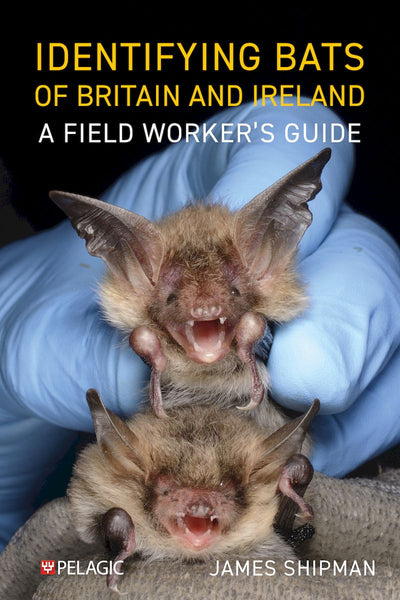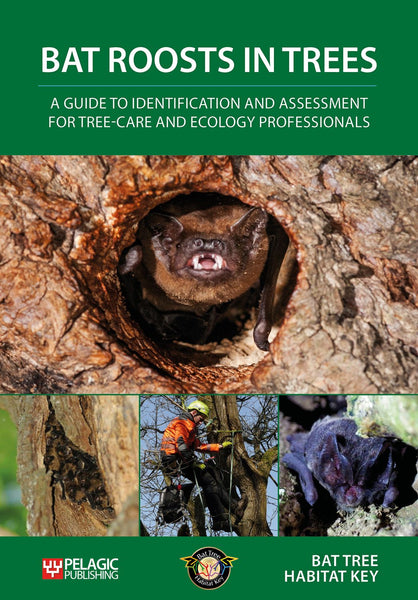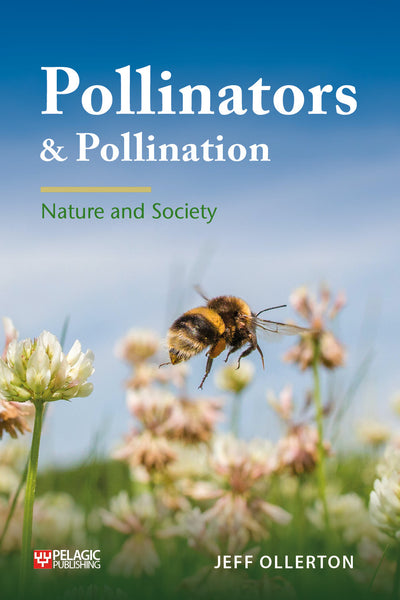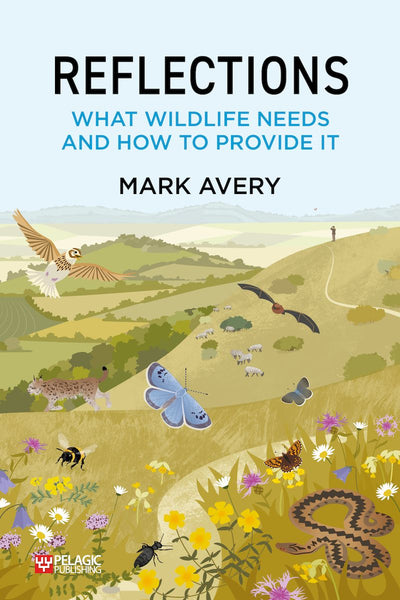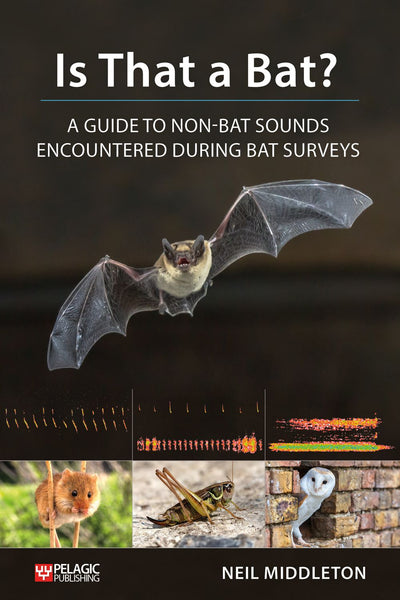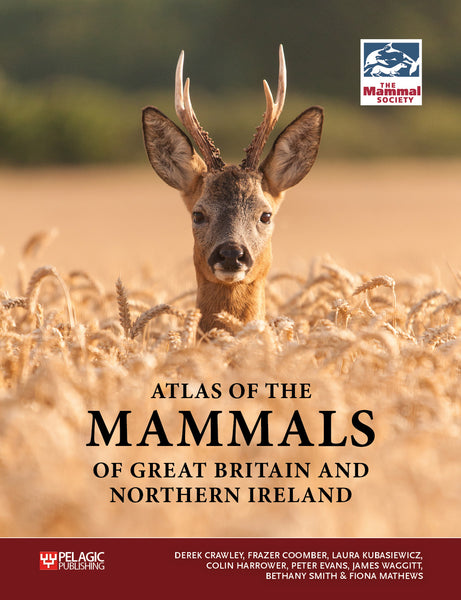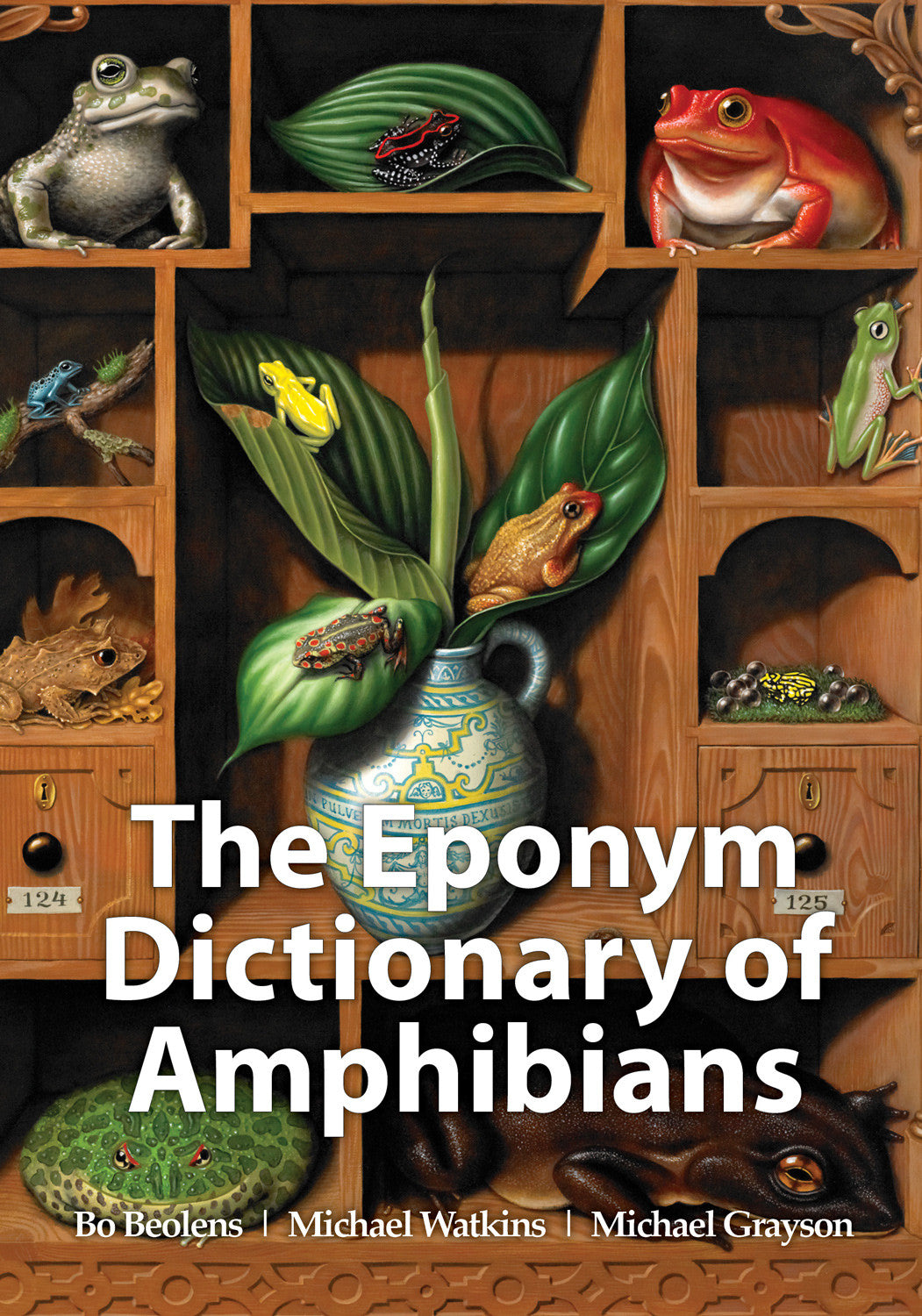
The Eponym Dictionary of Amphibians
- Fascinating insight into the history of species names
- 1,609 eponyms related to 2,668 amphibian species
- Lead author is a well-known natural history blogger - the Fatbirder
- While this book functions effectively as an etymological dictionary, it also works as a treasure trove of amusing and intriguing nuggets of biographical detail.
—Geordie Torr, Times Literary Supplement
- amphibian
- amphibians
- dictionary
- eponym
- herpetofauna
- herpetology
- taxonomy
Description
New species of animal and plant are being discovered all the time. When this happens, the new species has to be given a scientific, Latin name in addition to any common, vernacular name. In either case the species may be named after a person, often the discoverer but sometimes an individual they wished to honour or perhaps were staying with at the time the discovery was made. Species names related to a person are ‘eponyms’. Many scientific names are allusive, esoteric and even humorous, so an eponym dictionary is a valuable resource for anyone, amateur or professional, who wants to decipher the meaning and glimpse the history of a species name.
Sometimes a name refers not to a person but to a fictional character or mythological figure. The Forest Stubfoot Toad Atelopus farci is named after the FARC, a Colombian guerrilla army who found refuge in the toad’s habitat and thereby, it is claimed, protected it. Hoipollo's Bubble-nest Frog Pseudophilautus hoipolloi was named after the Greek for ‘the many’, but someone assumed the reference was to a Dr Hoipollo. Meanwhile, the man who has everything will never refuse an eponym: Sting's Treefrog Dendropsophus stingi is named after the rock musician, in honour of his ‘commitment and efforts to save the rainforest’.
Following the success of their Eponym Dictionary of Reptiles, the authors have joined forces to give amphibians a similar treatment. They have tracked down 1,609 honoured individuals and composed for each a brief, pithy biography. In some cases these are a reminder of the courage of scientists whose dedicated research in remote locations exposed them to disease and even violent death. The eponym ensures that their memory will survive, aided by reference works such as this highly readable dictionary. Altogether 2,668 amphibians are listed.
Readership
Naturalists, taxonomists, herpetologistsReviews
- I found the book captivating. I enjoyed reading the short capsule biographies, many of which contained details that I found fascinating, and encourage further reading. —Ross D. MacCulloch, Phyllomedusa
- While this book functions effectively as an etymological dictionary, it also works as a treasure trove of amusing and intriguing nuggets of biographical detail. —Geordie Torr, Times Literary Supplement
- Beolens, Watkins, and Grayson (all, independent scholars) offer a directory of living amphibians whose scientific or common name is derived from a person's name. The directory is arranged alphabetically by these individuals' names. Normally, the name of an individual within the scientific name is a tribute from the zoologist who first formally described the species to a colleague (sometimes the person who collected the specimen), or to a sponsor of the research. But the many possible variations all are explained in this book, which is primarily intended to serve as a reference for amateurs or specialists interested in this background. For anyone interested in natural history, this volume makes for fascinating browsing. Additionally it serves as an excellent illustration of the web of scientific and personal relationships in the field. The source of the scientific names is the AmphibiaWeb database at Berkeley, supplemented by standard directories and the scientific literature. The book also contains biographical and anecdotal information about the individuals, derived from a variety of sources, including personal knowledge; unfortunately specific citations are lacking. —D. Goodman, CHOICE
- The Eponym Dictionary of Amphibians is clearly a labour of love and a fascinating work. The entries are concise and informative and often entertaining. While it could have been improved with the addition of an index or two, it will still be a valuable resource for professional and amateur herpetologist alike. —Alisa Mizikar, Reference Reviews
- I think that the authors are to be congratulated for the effort that they have put into these books [Eponym Dictionaries], and for the apparent scrupulousness with which they have pursued their goals. An immense amount of research has gone into the work, tracking down obscure references and re-checking data from the original sources. ... These are not books only for reference, but also for dipping into in moments of quiet contemplation, because there is a wealth of quirky information here. The biographies vary from amusing anecdotes to boring lists of technical achievements, presumably depending on the available information. —David A. Morrison, Systematic Biology
- Do not fall prey to the inclination to set these volumes aside as dry and of use only to hardened academics. In unique fashion, they provide an overview of distinguished herpetologists and a multitude of other people who have impacted our field. So, while scholars will exploit these books, readers can simply enjoy them. —Robert Powell, IRCF Reptiles & Amphibians
- EDA is probably not going to be a book that sells in high volume. It’s not illustrated, it’s written in a mostly straightforward and pithy way without flourish or extraneous comment, but this is still a wonderful book, because – in my humble opinion – while not many of us need to know that Karunaratne’s Narrow-mouthed Frog is named after a Sri Lankan zoologist and entomologist, I find it uplifting that Bo and the two Michaels have featured him and a whole world full of diligent, hard-working individuals (1,609 of them to be exact) in a book – and that Pelagic have backed the project and clearly worked hard to help present it in as readable way as possible. —Charlie Moores, Talking Naturally
About the Author
Richard Crombet-Beolens is known to all as Bo Beolens or as his online personae, the ‘Grumpy Old Birder’ and the ‘Fatbirder’. While much of his career was in community work and as the CEO of various charities, all his free time has been spent birding or otherwise pursuing his life-long interest in the natural world. Since the late 1990s he has had articles published in a variety of birding magazines in the UK and USA. He is co-author of three other ‘eponym dictionaries’ and has a book of memoirs in publication. He has also written for several disability publications.
Michael Watkins is a shipbroker who mainly concentrated on the tanker oil and chemical markets and worked in London for 45 years. No longer active in the business, he is still associated with it as a tutor and part of the examining process for the industry's professional body, the Institute of Chartered Shipbrokers. Since retiring from the City, he has had more time for birding, travelling and grandchildren-minding, but never quite enough.
Michael Grayson spent most of his working life at the British Library, London. His childhood fascination with reptiles and amphibians never left him (much to his parents’ chagrin). His chief interests are vertebrate taxonomy and nomenclature, and the captive husbandry of exotic species. He is a Fellow of the Zoological Society of London.
Bibliographic Information
 250 pages
250 pages - BISAC SCI070000, NAT028000, SCI087000, REF008000
- BIC PSVW3, WNCK, PSAB, CBD






